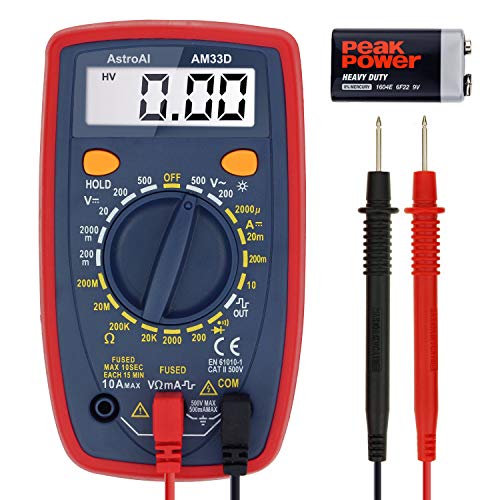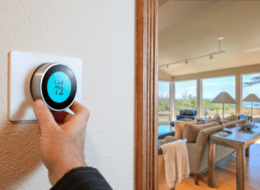Having a dead wheelchair battery can cause a moment of panic in many seniors who rely on these fantastic devices to get around.
Is there still hope for my dead battery? Or will I have to order a new one?
In this guide, we’ll break down why wheelchair batteries die and talk about a couple of different methods you can use to try to revive them. We’ll also talk about what to do when a dead wheelchair battery is just too far gone and you’ll simply need to replace it with a fresh one!
Why Do Wheelchair Batteries Die?
The most common cause of a discharged or dead wheelchair battery is leaving the scooter or power chair sitting for an extended period of time with no external charging source connected to it.
If you’ve left your scooter sitting for an extended period of time without using it and are now seeing charge warnings or no lights at all after connecting it to a battery charger, you’ll need to either replace your batteries with new ones or give them a good jolt and try to charge them again.
How Can I Tell If My Wheelchair Battery Is Dead?
A dead wheelchair battery is usually indicated by a low level of charge on your power chair’s battery gauge (see your owner’s manual for more details). A dead battery may also result in your inability to move the wheelchair at all while in use.
Motorized wheelchair batteries and scooter batteries are designed to prevent overheating, and in order to do this they need to carry a 10-11 Volt charge at all times. Problems can occur when the batteries drop below 10 or 11 Volts because at this point the charger will not even connect and charge up the batteries.
Once the wheelchair battery dies or falls below this minimum threshold, the built-in charger will not be able to recharge the battery.
When this happens, you can either:
- Option 1: Try to revive the dead battery
- Option 2: Purchase a new battery
Keep in mind that even if you do revive the dead battery, you may find its performance is less than ideal.
Still, some may consider it worth a try to revive!
How to Charge a Dead Wheelchair Battery
Step 1: Remove the battery from the wheelchair. In order to attempt restoring a dead battery, the battery will need to be removed from the electric wheelchair.
Step 2: To charge a battery that has been depleted, you will need to use a pulse charger. A pulse charger functions a bit like a battery defibrillator, jolting the battery back to life. Pulse chargers (aka desulfator chargers) break down the lead sulfate crystals and sulfate layers that form on the battery electrodes, which are essentially responsible for killing the battery.
Keep in mind that a pulse charger like the one below shouldn’t be used to fully charge your wheelchair’s battery, but instead, used to simply charge up the battery enough that the manufacturer’s battery charger can recognize it and charge it fully.
This article provides some good photos and additional details on how to attach the pulse charger to charge the wheelchair battery
Step 3: Check the voltage. As the pulse charger restores your dead battery, you’ll need to check the voltage so that you can stop once the battery reaches an adequate, normal level (usually 10 or 11 volts). You can check the voltage with a voltmeter. Some pulse chargers may have a built-in voltmeter, in which case you won’t need to buy a separate voltmeter.
Step 4: Return the battery to the housing unit and charge as normal. Once your dead battery has been restored to a normal voltage, you can simply return the wheelchair battery to its enclosure and charge the battery as you normally would.
Alternatives: Hire a Pro. If you don’t have the time, patience, or expertise to deal with a dead battery, it may be worth hiring a professional to attempt a battery restoration for you. This is not a job that should be taken lightly because an improperly charged or discharged wheelchair battery can result in serious injury or worse, so often working with a pro is the best option. Just be sure to weigh the pros and cons of hiring an expert vs purchasing a brand new battery.
Charging a Wheelchair Battery DIY Style
If you choose to try to revive your wheelchair battery on your own, remember that this is an experiment and the results may not be what you are looking for.
It’s possible any work attempting to restore your dead battery will actually shorten the battery’s lifespan even more.
In the video below, an individual charges up their wheelchair battery with a secondary external charger.
In this video, you’ll see a man charge a dead power wheelchair battery through the use of a charger like the ones discussed in the above section.
Keep in mind when charging a battery yourself without a pulse charger (which we don’t recommend, as it can be risky), you’ll still need some kind of voltmeter to read the voltage.
Tips for Wheelchair Battery Maintenence
Prevention is often the best course of action, so follow these steps to make sure your wheelchair battery doesn’t die again!
- Try to keep the charger that comes with your wheelchair. It’s important to use the correct charger for your wheelchair, and ideally, you’ll want to stick with the battery charger that came with your wheelchair. Third-party chargers are rarely as efficient and reliable as manufacturer-issued chargers. If you need to purchase a new charger, see if you can get a replacement of the original manufacturer’s charger.
- Avoid letting your batteries go totally dead. It’s better to run your wheelchair until the batteries are low and then recharge them, rather than run the batteries until they are completely dead. This is because repeated deep discharges will shorten the life of your battery, even if you charge it right after it croaks. Most wheelchair batteries don’t have charge memory, as some other types of batteries do.
- Keep batteries at room temperature. The chemical reaction that takes place in the battery generates heat. If your wheelchair is stored in a very hot area, then it’s likely to damage your batteries, even if they’re not in use. Keep the batteries at room temperature and try to keep direct sunlight from hitting them.
Electric Wheelchair Charging Questions & Answers
What Type of Batteries Do Wheelchairs Run On?
There are generally three types of batteries most electric wheelchairs run on:
- Sealed Lead Acid (SLA)
- Lithium
- Nickel Cadmium (NiCad)
SLA and lithium-ion tend to be the most common types of batteries used in electric wheelchairs.
How long does it take to charge wheelchair batteries?
Electric wheelchairs are usually powered by lithium-ion batteries. Lithium-ion batteries generally take 6 – 8 hours to charge fully. Keep in mind that charging time can take closer to 10-12 hours if the batteries are being charged up for the very first time.
How often should I charge my wheelchair battery?
If you use your electric wheelchair on a daily basis, you’ll want to charge the batteries every night for 8-15 hours. If you don’t use your wheelchair quite as frequently, and instead use it a few times a week, consider charging the batteries for the same amount of time 2x a week.
How should I store wheelchair batteries?
Always store your wheelchair batteries with a full charge. Ideally, you’ll want to check them once a month and charge them up as needed. If you’ll be storing your wheelchair away for more than a few weeks, remove the batteries from the device and seal them to keep them safe. Store the batteries in a temperature-regulated room, if possible.
How long do wheelchair batteries last?
The lifespan of wheelchair batteries depends a lot on how often the wheelchair is used. If you use your motorized wheelchair several times a day and are traveling several miles with it, you may need to replace the battery as often as every 6 months.
However, if you only use the wheelchair a few times a week, or use it around the house and don’t go far, then wheelchair batteries can last anywhere from 2 to 4 years.
A lot comes down to how frequently the wheelchair is being used, at what distances it’s traveling, and the type of terrain (hills and unstable terrain will take more energy out of the battery, especially if it’s designed for shorter trips like many folding mobility scooters).
Batteries that are used more need to be charged more often, but batteries only have so much lifespan in them. Also, keep in mind that most wheelchair batteries will have a warranty period of 1 year.
Have you ever had to struggle and toil over a dead wheelchair battery? Did you end up reviving the battery or buying a new one? Share your process in the comments below!
Disclaimer: We do not take any responsibility or liability for injury that may come from attempting some of the strategies shown in the videos and outline in the text above. Please purchase a new battery if you are not experienced and confident with electronics.
Last update on 2022-01-29 / Affiliate links / Images from Amazon Product Advertising API






